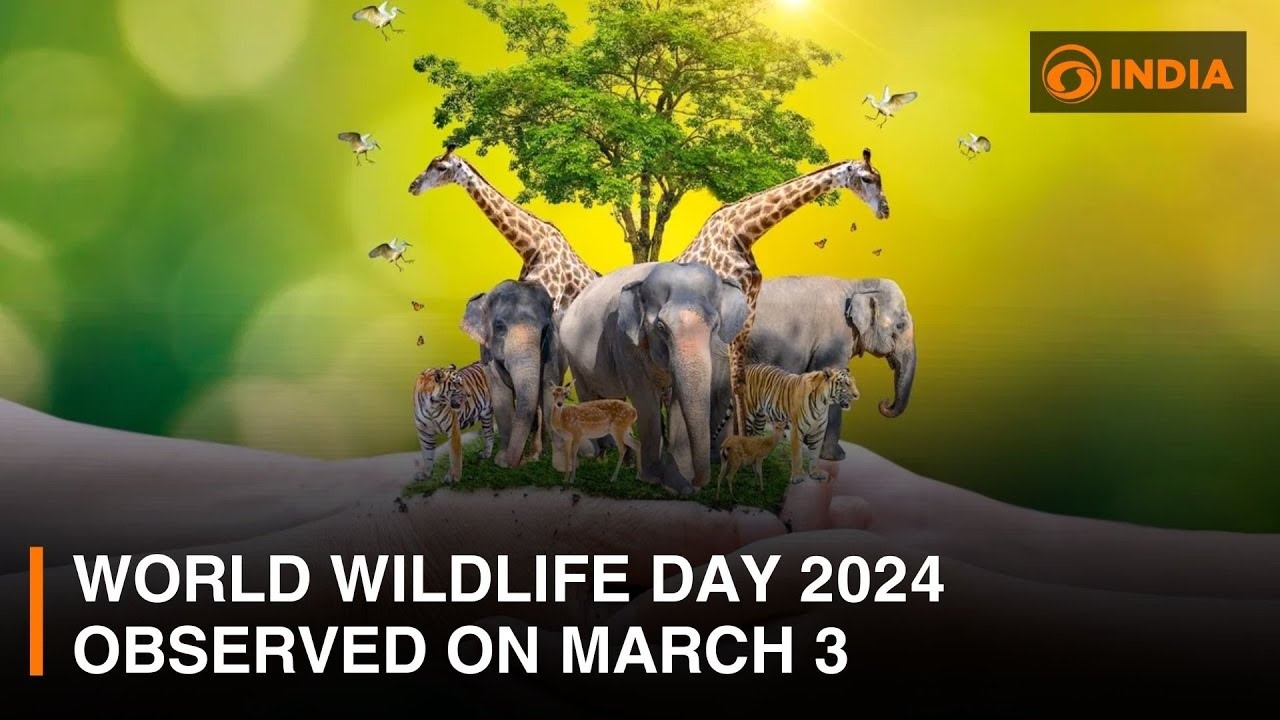Description

Copyright infringement not intended
Picture Courtesy: https://www.youtube.com/watch?v=F4tHWppZh6M&ab_channel=DDIndia
Context: World Wildlife Day, observed annually on March 3, is a significant global event aimed at raising awareness about the importance of wildlife conservation and promoting sustainable practices.
Details
Objectives of World Wildlife Day
- Promoting Sustainable Practices: World Wildlife Day emphasizes the importance of adopting sustainable practices to conserve biodiversity. This includes promoting responsible and ethical behaviour towards the environment and its inhabitants.
- Raising Public Awareness: The day serves as a platform to raise public awareness about the need to protect and care for animals. It aims to educate people about the threats faced by wildlife and the role individuals can play in conservation efforts.
- Highlighting Interconnectedness: The event aims to underscore the interconnectedness of all living things on Earth. By recognizing the delicate balance within ecosystems, it encourages a holistic approach to conservation and the promotion of peaceful coexistence between humans and animals.
- Encouraging Activism, Campaigning, and Education: World Wildlife Day seeks to mobilize individuals and communities to actively engage in wildlife conservation through activism, campaigning, and education. It encourages people to take collective action to protect the planet's biodiversity.
Theme of World Wildlife Day 2024
- The theme for World Wildlife Day 2024 is "Connecting People and Planet: Exploring Digital Innovation in Wildlife Conservation."
- This theme highlights the potential of technology and digital innovation in advancing wildlife conservation efforts. In the context of the digital age, technological solutions can contribute to addressing longstanding challenges in conservation.

History of World Wildlife Day
- The concept of World Wildlife Day was first proposed by Thailand to the United Nations General Assembly in 2013.
- On December 20, 2013, the UN General Assembly adopted a resolution designating March 3 as World Wildlife Day, and the first observance took place in 2014.
- The choice of March 3 holds historical significance, as it marks the signing of the Convention on International Trade in Endangered Species of Wild Fauna and Flora (CITES) in 1973. CITES is a global agreement aimed at ensuring that international trade does not threaten the survival of wild animals and plants.
|
Convention on International Trade in Endangered Species (CITES)
|
|
Key Points
|
Description
|
|
Purpose
|
Regulate international trade in wild animals and plants to prevent endangerment.
|
|
Established
|
1973 (entered into force 1975)
|
|
Headquarters
|
Geneva, Switzerland
|
|
Members
|
184 countries
|
|
Species Covered
|
Over 38,000 animals and plants
|
|
Key Mechanism
|
Permit system for import/export of listed species
|
|
Appendices (Protection Levels)
|
Appendix I: Highest protection for threatened species. Trade is strictly regulated, only allowed in exceptional circumstances.
Appendix II: Species not necessarily endangered, but could be with uncontrolled trade. Trade allowed with permits demonstrating no harm to wild populations.
Appendix III: Species needing protection in a specific country. Requires export permits from the country of origin.
|
|
Main Authorities
|
Scientific Authority: Assesses scientific evidence of trade impact on species.
Management Authority: Issues or rejects CITES permits based on scientific advice.
|
Conclusion
- World Wildlife Day serves as a platform to raise awareness about the importance of wildlife conservation and to highlight the need for global efforts to protect and preserve the world's diverse ecosystems and species. Each year, the day focuses on a specific theme related to wildlife conservation, fostering a deeper understanding of the challenges and opportunities in safeguarding our planet's biodiversity.
|
PRACTICE QUESTION
Q. What is the theme for World Wildlife Day in 2024?
A) Biodiversity Conservation
B) Digital Innovation in Wildlife Conservation
C) Connecting People and Planet
D) Wildlife Protection
Answer: C
Explanation:
The correct answer is C) Connecting People and Planet. The theme for World Wildlife Day in 2024 focuses on the interconnectedness between people and the planet, emphasizing the role of digital innovation in wildlife conservation.
|












